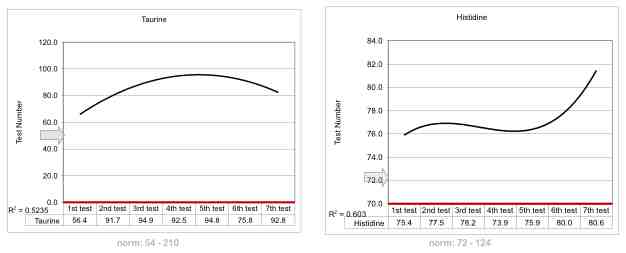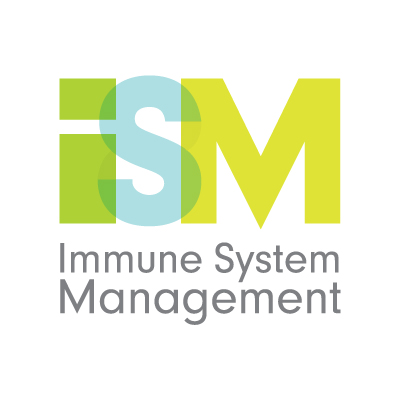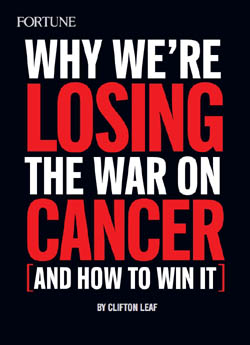Conventional medicine speaks freely of “cures” but prohibit (and often punish) alternative practitioners from using the word; yet conventional oncology rarely cures cancer. For example, chemotherapy’s success rate is dismal. It can achieve remissions in about 7% of all human cancers, for an additional 15% of cases, survival can be prolonged beyond the point at which death would be expected without treatment…this is not the same as “cure”. The 7% refers to 5-year survival rate and thus overlooks the risk of secondary cancer or recurrences.
There is tremendous institutional resistance to anyone who attempts to practice and scientifically document the effectiveness of complimentary approaches to oncology. The medical establishment insists everyone follow the same exact protocol, regardless of it’s individual efficacy. Yet, despite billions of dollars of conventional research into cancer, every year, the percentage of North Americans dying from cancer is still what it was in 1970…… and in 1950! A fundamental problem in today’s cancer research effort, in terms of therapies, is that the preclinical models of human cancer have very little predictive power in terms of how actual human beings—actual human tumors inside clients—will respond. Secondly, in the typical full clinical study involving double-blind test groups, there is rarely any true control over the groups since cancer is typically the result of a multiplicity of causes. Further, the lifestyles of the control and experimental groups are completely uncontrollable. Hence, how truly valid is the data collected from many clinical studies?
The scientific and medical community widely acknowledge the flawed model of drug development…an obsession with tumor shrinkage…a focus on individual cellular mechanisms, sometimes to the near exclusion of what’s happening in the organism as a whole. All these failures come to a head in the clinical trial—a rigidly controlled, three-phase system for testing new drugs and other medical procedures in humans. The process remains the only way to get from research to drug approval. Why if everyone understands there is a problem, isn’t anything being done? Two reasons;
1) There’s no other model with which to replace.
2) Regulatory bodies have created industry inertia since they continue to recognize these models as the gold standard for predicting the utility of drugs.
For further discussion of this topic, read “Why We’re Losing the War on Cancer”. (pdf download)
Each of the core principles of ISM’s Aminomics approach is based upon extensive and evolving laboratory and applied evidence. Contemporary peer-reviewed scientific and medical knowledge and evidence has been integrated with our “hands-on” laboratory and clinical experience as we analyze and interpret data from thousands of ISM client profiles. We call our approach “client-specific, evidence-based medicine,” because we believe that the integration of several diverse medical sciences and disciplines holds the greatest potential for improving public healthcare today regardless of the theoretical framework from which the conventional medical system originated.
In that regard, the effectiveness of ISM’s Aminomics™ approach has been established at four distinct levels:
1) Scientific Literature Confirmation
2) Case Studies
3) Case Series Studies
4) Client-specific, Evidence-based Data
1) Scientific Literature Confirmation
There are thousands of peer-reviewed and valid medical/science studies that have analysed the efficacy of nutraceutical impact on cancer, the immune system and overall health of an individual. Most medical professionals will agree that one of the major forces accounting for the steady increase in cancer incidence and mortality rates, and indeed many other chronic conditions, is nutritional imbalance.
Case Studies
While conventional science lends little conclusive credence to individual case studies, one cannot overlook the scientific importance of anecdotal or case study information. After all, a clinical trial is actually little more than a series of case studies, run under “controlled settings”. ISM has studied thousands of blood plasma samples for over two decades. So, the power of cumulative case studies becomes very pertinent to the objective review of scientific and medical efficacy.
The following provides a small cross-section of ISM case studies in cancer. We likewise have had many individual success stories with a wide range of chronic disease. The central theme is that a strong immune system will support and improve metabolic functioning and overall health.
CLIENT 1 – BREAST CANCER:
SITUATION: 63-year-old female presented with low-grade breast cancer.
• Pursued radical mastectomy and prophylaxis of chemotherapy and radiotherapy.
• Relapsed with advanced stage IV disease. Expected 1-year survival < 3%.
ISM: Client presented with advanced disease in multiple sites.
• We conducted 4 ISM assays and delivered 10 sets of compounds.
• Client elected radiotherapy for clavicular node and chemotherapy for skin metastasis.
OUTCOME: The client presents with disease stabilization with minimal or no side effect from chemotherapy.
Click here to learn more about our program.
CLIENT 2 – PROSTATE CANCER:
SITUATION: 66-year-old male presented with high grade poorly differentiated adenocarcinoma of the prostate.
• Grade and differentiation known to preclude response from conventional treatment.
ISM: Client presented with untreated advanced/high grade disease
• We conducted 10 Aminomics assays and 6 sets of compounds.
OUTCOME: The client presents with no evidence of disease and is in excellent health.
Click here to learn more about our program.
CLIENT 3 – COLORECTAL CANCER:
SITUATION: 47-year-old female presented with stage IV colorectal cancer.
ISM: Client presented with advanced disease in multiple sites.
• We conducted 12 Aminomics assays and delivered 10 sets of compounds.
OUTCOME: The client presents with complete remission of side effects, adverse reactions and disease.
• The client remains stable, in excellent health and disease free.
Click here to learn more about our program.
CLIENT 4 – LYMPHOMA:
SITUATION: 62-year-old male presented with high-grade lymphoma. Had 8 cycles CHOP chemotherapeutic with stable disease.
ISM: Client presented with stable disease with high likelihood of relapse and multiple medium term side effects and durable adverse reactions to chemotherapy.
• We conducted 7 Aminomics assays and delivered 8 sets of compounds.
OUTCOME: The client presents with complete remission of side effects, adverse reactions and disease.
• Consult with oncologist and client with ISM staff revealed an expected poor outcome with relapse and unresponsive disease and death within 1 year of diagnosis.
• The client remains stable, in excellent health and disease free.
Click here to learn more about our program.
CLIENT 5 – LEUKEMIA:
SITUATION: 47 year old male presented with chronic mylogeonous leukemia.
• Had CHOP chemotherapeutic protocol and failed therapy.
• Advised bone marrow transplant only treatment.
• Expected survival of 2 years.
ISM: Client presented with advanced refractory/resistant disease and enrolled in protocol.
• We conducted 8 Aminomics assays and delivered 16 sets of compounds.
OUTCOME: The client presents with no evidence of disease conferred through clinical presentation and repeated imaging studies.
• At diagnosis, the client was positive for the Philadelphia chromosome…subsequent bone marrow aspirates are negative for this chromosomal aberrancy that is directly associated with chronic mylogeonous leukemia.
• The client remains stable, in excellent health and disease free.
Click here to learn more about our program.
CLIENT 6 – POLYMYOSITIS:
SITUATION: 70 year old female with untreatable and rapidly debilitating pathologically confirmed neuromuscular disease: polymyositis.
• No known treatment (conventional or experimental) to treat disease or mitigate symptoms.
ISM: Client presented in advanced disease state with CK enzymes over 5000 and enrolled in protocol.
• We conducted 10 Aminomics assays and delivered 6 sets of compounds.
OUTCOME: Client presents with disease remission, normal CK enzymes (less than 100) and complete remission of all symptomotology.
Click here to learn more about our program.
Over the past two decades, ISM has analyzed thousands of blood plasma samples from hundreds and hundreds of people with cancer and various other chronic diseases. This information has provided sufficient information for the basis of several key Case Series Studies. A Case Series Study involves the continued review of data from a multitude of clients, providing an ever-growing database of blood analysis and client efficacy information over an extended period of time. The ongoing nature of the research and the continued building of data is critical to the ultimate determination of efficacy.
4) Client-specific, Evidence-based Data
The Biochemical Impact of Aminomics Intervention
The following graphs depict the impact that ISM’s Aminomics approach has on just a couple of the key amino acid bio-markers (from cumulative client data). The Y-axis demonstrates the change in blood plasma amino acid concentration over time (time = X-axis) as compared to the client’s first pre-therapy, ISM blood test and then as the client follows the ISM protocol. Note the dynamic movement of the client’s amino acid blood level concentration over time.
The increasing/decreasing amino acid plasma concentration is indicative of the body’s immune and metabolic system’s interaction with its substrates as the program progresses. Different levels of amino acids and proteins are required by the body’s systems at various points of the fight against cancerous cells and carcinogens. When taken into the context & interrelation of all the basic 20 amino acids and the client’s medical history, we can attain a more complete understanding of the status and progression of the metabolic and immune system functioning.
ISM has amassed and interpreted the amino acid profile, over time, of thousands of blood plasma tests from cancer and non-cancer clients as the client proceeds with the Aminomics intervention. The following provides just a high-level review of the data for a few amino acids. The source data is further stratified by:
• cancer type
• sex
• survival
i.e., sample data:

Decades of clinically administering the ISM client-specific Aminomics has resulted in enhanced response rates and quality of life without side-effect or adverse events for hundreds of individuals. For example, in numerous individuals the application of ISM’s Aminomics has demonstrated significant positive response rates in disease remission, stabilization, and overall improvement in quality of life.
The ISM Aminomics approach has proven to be beneficial in the management of collateral damage, from both a prevention perspective and a treatment perspective (should a client undergo radiotherapy and/or chemotherapy).
ISM response rates could be very complementary to conventional cancer therapeutics in:
– disease remission
– stabilization
– overall improvement in quality of life
ISM may be beneficial in the management of collateral damage for:
– Prevention
– Treatment


